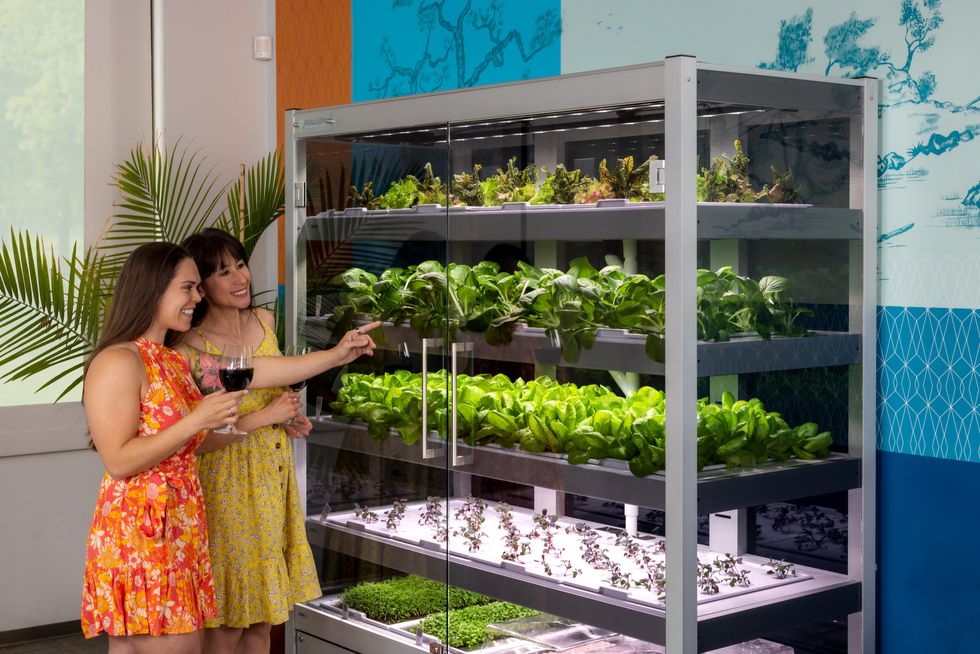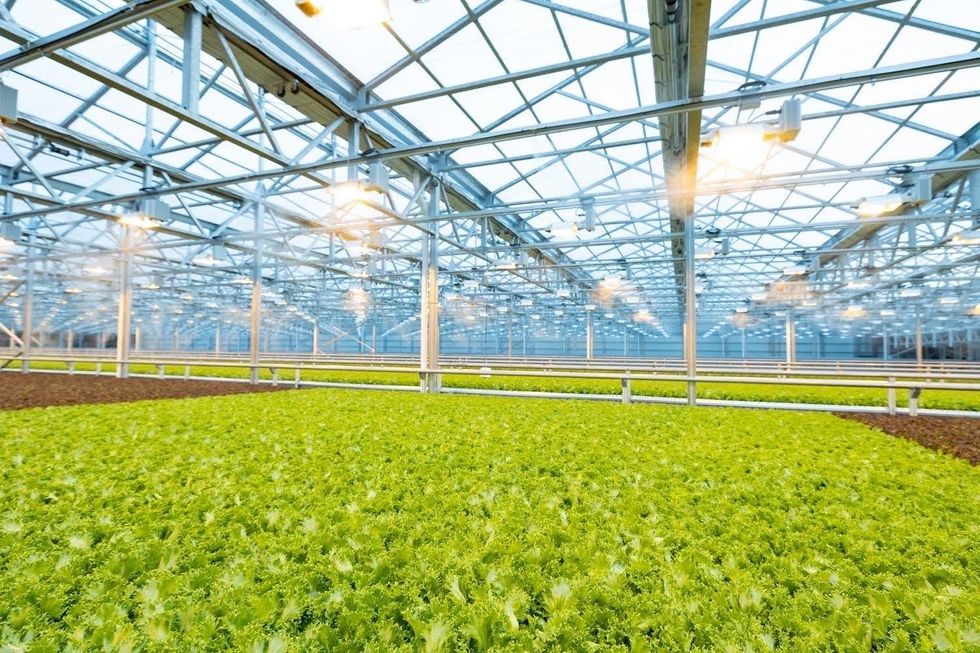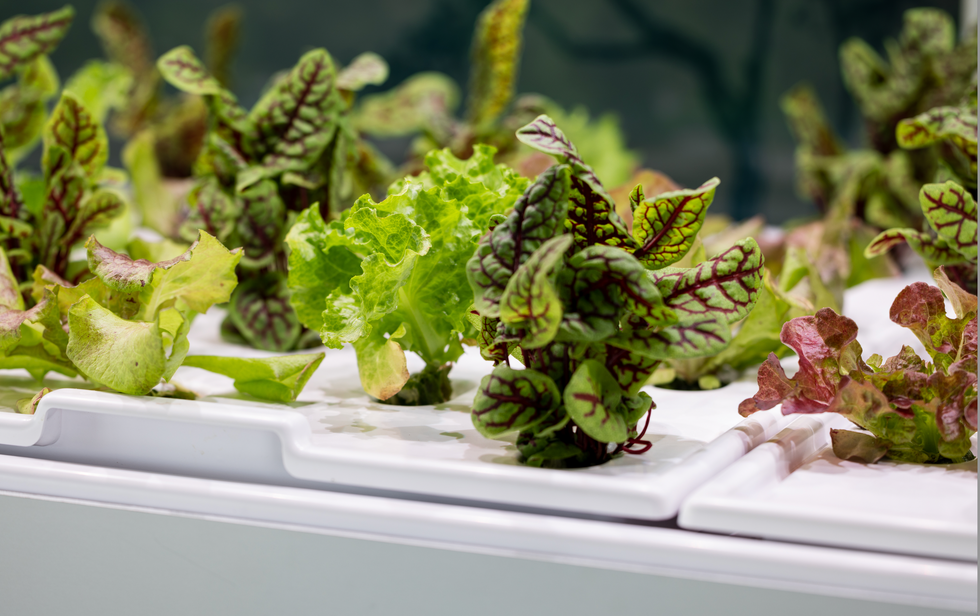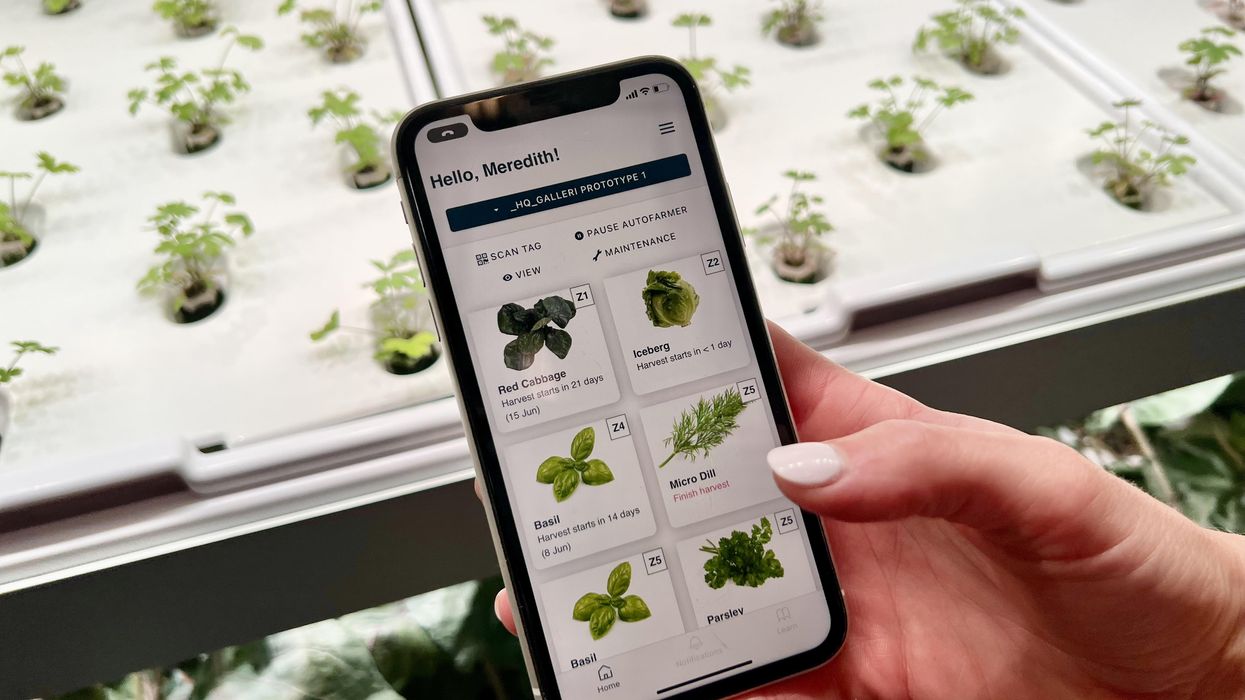Science Fact vs. Science Fiction: Can You Tell the Difference?

A portrait of skepticism while reading information online.
Today's growing distrust of science is not an academic problem. It can be a matter of life and death.
Take, for example, the tragic incident in 2016 when at least 10 U.S. children died and over 400 were sickened after they tried homeopathic teething medicine laced with a poisonous herb called "deadly nightshade." Carried by CVS, Walgreens, and other major American pharmacies, the pills contained this poison based on the alternative medicine principle of homeopathy, the treatment of medical conditions by tiny doses of natural substances that produce symptoms of disease.
Such "alternative medicines" take advantage of the lack of government regulation and people's increasing hostility toward science.
These children did not have to die. Numerous research studies show that homeopathy does not work. Despite this research, homeopathy is a quickly-growing multi-billion dollar business.
Such "alternative medicines" take advantage of the lack of government regulation and people's increasing hostility toward science. Polling shows that the number of people who believe that science has "made life more difficult" increased by 50 percent from 2009 to 2015. According to a 2017 survey, only 35 percent of respondents have "a lot" of trust in scientists; the number of people who do "not at all" trust scientists increased by over 50 percent from a similar poll conducted in December 2013.
Children dying from deadly nightshade is only one consequence of this crisis of trust. For another example, consider the false claim that vaccines cause autism. This belief has spread widely across the US, and led to a host of problems. For instance, measles was practically eliminated in the US by 2000. However, in recent years outbreaks of measles have been on the rise, driven by parents failing to vaccinate their children in a number of communities.
The Internet Is for… Misinformation
The rise of the Internet, and more recently social media, is key to explaining the declining public confidence in science.
Before the Internet, the information accessible to the general public about any given topic usually came from experts. For instance, researchers on autism were invited to talk on mainstream media, they wrote encyclopedia articles, and they authored books distributed by large publishers.
The Internet has enabled anyone to be a publisher of content, connecting people around the world with any and all sources of information. On the one hand, this freedom is empowering and liberating, with Wikipedia a great example of a highly-curated and accurate source on the vast majority of subjects. On the other, anyone can publish a blog piece making false claims about links between vaccines and autism or the effectiveness of homeopathic medicine. If they are skilled at search engine optimization, or have money to invest in advertising, they can get their message spread widely. Russia has done so extensively to influence elections outside of its borders, whether in the E.U. or the U.S.
Unfortunately, research shows that people lack the skills for differentiating misinformation from true information. This lack of skills has clear real-world effects: U.S. adults believed 75 percent of fake news stories about the 2016 US Presidential election. The more often someone sees a piece of misinformation, the more likely they are to believe it.
To make matters worse, we all suffer from a series of thinking errors such as the confirmation bias, our tendency to look for and interpret information in ways that conform to our intuitions.
Blogs with falsehoods are bad enough, but the rise of social media has made the situation even worse. Most people re-share news stories without reading the actual article, judging the quality of the story by the headline and image alone. No wonder research has indicated that misinformation spreads as much as 10 times faster and further on social media than true information. After all, creators of fake news are free to devise the most appealing headline and image, while credible sources of information have to stick to factual headlines and images.
To make matters worse, we all suffer from a series of thinking errors such as the confirmation bias, our tendency to look for and interpret information in ways that conform to our intuitions and preferences, as opposed to the facts. Our inherent thinking errors combined with the Internet's turbine power has exploded the prevalence of misinformation.
So it's no wonder we see troubling gaps between what scientists and the public believe about issues like climate change, evolution, genetically modified organisms, and vaccination.
What Can We Do?
Fortunately, there are proactive steps we can take to address the crisis of trust in science and academia. The Pro-Truth Pledge, founded by a group of behavioral science experts (including myself) and concerned citizens, calls on public figures, organizations, and private citizens to commit to 12 behaviors listed on the pledge website that research in behavioral science shows correlate with truthfulness.
Signers are held accountable through a crowdsourced reporting and evaluation mechanism while getting reputational rewards because of their commitment. The scientific consensus serves as a key measure of credibility, and the pledge encourages pledge-takers to recognize the opinions of experts - especially scientists - as more likely to be true when the facts are disputed.
The pledge "really does seem to change one's habits," encouraging signers to have attitudes "of honesty and moral sincerity."
Launched in December 2016, the pledge has surprising traction. Over 6200 private citizens took the pledge. So did more than 500 politicians, including members of US state legislatures Eric Nelson (PA), James White (TX), and Ogden Driskell (WY), and national politicians such as members of U.S. Congress Beto O'Rourke (TX), Matt Cartwright (PA), and Marcia Fudge (OH). Over 700 other public figures, such as globally-known public intellectuals Peter Singer, Steven Pinker, Michael Shermer, and Jonathan Haidt, took the pledge, as well as 70 organizations such as Media Bias/Fact Check, Fugitive Watch, Earth Organization for Sustainability, and One America Movement.
The pledge is effective in changing behaviors. A candidate for Congress, Michael Smith, took the Pro-Truth Pledge. He later posted on his Facebook wall a screenshot of a tweet by Donald Trump criticizing minority and disabled children. However, after being called out that the tweet was a fake, he went and searched Trump's feed. He could not find the original tweet, and while Trump may have deleted it, the candidate edited his own Facebook post to say, "Due to a Truth Pledge I have taken, I have to say I have not been able to verify this post." He indicated that he would be more careful with future postings.
U.S. Army veteran and pledge-taker John Kirbow described how the pledge "really does seem to change one's habits," helping push him both to correct his own mistakes with an "attitude of humility and skepticism, and of honesty and moral sincerity," and also to encourage "friends and peers to do so as well."
His experience is confirmed by research on the pledge. Two research studies at Ohio State University demonstrated the effectiveness of the pledge in changing the behavior of pledge-takers to be more truthful with a strong statistical significance.
Taking the pledge yourself, and encouraging people you know and your elected representatives to do the same, is an easy and effective way to fight misinformation and to promote a culture that values the truth.
Autonomous, indoor farming gives a boost to crops
Artificial Intelligence is already helping to grow some of the food we eat.
The glass-encased cabinet looks like a display meant to hold reasonably priced watches, or drugstore beauty creams shipped from France. But instead of this stagnant merchandise, each of its five shelves is overgrown with leaves — moss-soft pea sprouts, spikes of Lolla rosa lettuces, pale bok choy, dark kale, purple basil or red-veined sorrel or green wisps of dill. The glass structure isn’t a cabinet, but rather a “micro farm.”
The gadget is on display at the Richmond, Virginia headquarters of Babylon Micro-Farms, a company that aims to make indoor farming in the U.S. more accessible and sustainable. Babylon’s soilless hydroponic growing system, which feeds plants via nutrient-enriched water, allows chefs on cruise ships, cafeterias and elsewhere to provide home-grown produce to patrons, just seconds after it’s harvested. Currently, there are over 200 functioning systems, either sold or leased to customers, and more of them are on the way.
The chef-farmers choose from among 45 types of herb and leafy-greens seeds, plop them into grow trays, and a few weeks later they pick and serve. While success is predicated on at least a small amount of these humans’ care, the systems are autonomously surveilled round-the-clock from Babylon’s base of operations. And artificial intelligence is helping to run the show.
Babylon piloted the use of specialized cameras that take pictures in different spectrums to gather some less-obvious visual data about plants’ wellbeing and alert people if something seems off.
Imagine consistently perfect greens and tomatoes and strawberries, grown hyper-locally, using less water, without chemicals or environmental contaminants. This is the hefty promise of controlled environment agriculture (CEA) — basically, indoor farms that can be hydroponic, aeroponic (plant roots are suspended and fed through misting), or aquaponic (where fish play a role in fertilizing vegetables). But whether they grow 4,160 leafy-green servings per year, like one Babylon farm, or millions of servings, like some of the large, centralized facilities starting to supply supermarkets across the U.S., they seek to minimize failure as much as possible.

Babylon’s soilless hydroponic growing system
Courtesy Babylon Micro-Farms
Here, AI is starting to play a pivotal role. CEA growers use it to help “make sense of what’s happening” to the plants in their care, says Scott Lowman, vice president of applied research at the Institute for Advanced Learning and Research (IALR) in Virginia, a state that’s investing heavily in CEA companies. And although these companies say they’re not aiming for a future with zero human employees, AI is certainly poised to take a lot of human farming intervention out of the equation — for better and worse.
Most of these companies are compiling their own data sets to identify anything that might block the success of their systems. Babylon had already integrated sensor data into its farms to measure heat and humidity, the nutrient content of water, and the amount of light plants receive. Last year, they got a National Science Foundation grant that allowed them to pilot the use of specialized cameras that take pictures in different spectrums to gather some less-obvious visual data about plants’ wellbeing and alert people if something seems off. “Will this plant be healthy tomorrow? Are there things…that the human eye can't see that the plant starts expressing?” says Amandeep Ratte, the company’s head of data science. “If our system can say, Hey, this plant is unhealthy, we can reach out to [users] preemptively about what they’re doing wrong, or is there a disease at the farm?” Ratte says. The earlier the better, to avoid crop failures.

Natural light accounts for 70 percent of Greenswell Growers’ energy use on a sunny day.
Courtesy Greenswell Growers
IALR’s Lowman says that other CEA companies are developing their AI systems to account for the different crops they grow — lettuces come in all shapes and sizes, after all, and each has different growing needs than, for example, tomatoes. The ways they run their operations differs also. Babylon is unusual in its decentralized structure. But centralized growing systems with one main location have variabilities, too. AeroFarms, which recently declared bankruptcy but will continue to run its 140,000-square foot vertical operation in Danville, Virginia, is entirely enclosed and reliant on the intense violet glow of grow lights to produce microgreens.
Different companies have different data needs. What data is essential to AeroFarms isn’t quite the same as for Greenswell Growers located in Goochland County, Virginia. Raising four kinds of lettuce in a 77,000-square-foot automated hydroponic greenhouse, the vagaries of naturally available light, which accounts for 70 percent of Greenswell’s energy use on a sunny day, affect operations. Their tech needs to account for “outside weather impacts,” says president Carl Gupton. “What adjustments do we have to make inside of the greenhouse to offset what's going on outside environmentally, to give that plant optimal conditions? When it's 85 percent humidity outside, the system needs to do X, Y and Z to get the conditions that we want inside.”
AI will help identify diseases, as well as when a plant is thirsty or overly hydrated, when it needs more or less calcium, phosphorous, nitrogen.
Nevertheless, every CEA system has the same core needs — consistent yield of high quality crops to keep up year-round supply to customers. Additionally, “Everybody’s got the same set of problems,” Gupton says. Pests may come into a facility with seeds. A disease called pythium, one of the most common in CEA, can damage plant roots. “Then you have root disease pressures that can also come internally — a change in [growing] substrate can change the way the plant performs,” Gupton says.
AI will help identify diseases, as well as when a plant is thirsty or overly hydrated, when it needs more or less calcium, phosphorous, nitrogen. So, while companies amass their own hyper-specific data sets, Lowman foresees a time within the next decade “when there will be some type of [open-source] database that has the most common types of plant stress identified” that growers will be able to tap into. Such databases will “create a community and move the science forward,” says Lowman.
In fact, IALR is working on assembling images for just such a database now. On so-called “smart tables” inside an Institute lab, a team is growing greens and subjects them to various stressors. Then, they’re administering treatments while taking images of every plant every 15 minutes, says Lowman. Some experiments generate 80,000 images; the challenge lies in analyzing and annotating the vast trove of them, marking each one to reflect outcome—for example increasing the phosphate delivery and the plant’s response to it. Eventually, they’ll be fed into AI systems to help them learn.
For all the enthusiasm surrounding this technology, it’s not without downsides. Training just one AI system can emit over 250,000 pounds of carbon dioxide, according to MIT Technology Review. AI could also be used “to enhance environmental benefit for CEA and optimize [its] energy consumption,” says Rozita Dara, a computer science professor at the University of Guelph in Canada, specializing in AI and data governance, “but we first need to collect data to measure [it].”

The chef-farmers can choose from 45 types of herb and leafy-greens seeds.
Courtesy Babylon Micro-Farms
Any system connected to the Internet of Things is also vulnerable to hacking; if CEA grows to the point where “there are many of these similar farms, and you're depending on feeding a population based on those, it would be quite scary,” Dara says. And there are privacy concerns, too, in systems where imaging is happening constantly. It’s partly for this reason, says Babylon’s Ratte, that the company’s in-farm cameras all “face down into the trays, so the only thing [visible] is pictures of plants.”
Tweaks to improve AI for CEA are happening all the time. Greenswell made its first harvest in 2022 and now has annual data points they can use to start making more intelligent choices about how to feed, water, and supply light to plants, says Gupton. Ratte says he’s confident Babylon’s system can already “get our customers reliable harvests. But in terms of how far we have to go, it's a different problem,” he says. For example, if AI could detect whether the farm is mostly empty—meaning the farm’s user hasn’t planted a new crop of greens—it can alert Babylon to check “what's going on with engagement with this user?” Ratte says. “Do they need more training? Did the main person responsible for the farm quit?”
Lowman says more automation is coming, offering greater ability for systems to identify problems and mitigate them on the spot. “We still have to develop datasets that are specific, so you can have a very clear control plan, [because] artificial intelligence is only as smart as what we tell it, and in plant science, there's so much variation,” he says. He believes AI’s next level will be “looking at those first early days of plant growth: when the seed germinates, how fast it germinates, what it looks like when it germinates.” Imaging all that and pairing it with AI, “can be a really powerful tool, for sure.”
Scientists make progress with growing organs for transplants
Researchers from the University of Cambridge have laid the foundations for growing synthetic embryos that could develop a beating heart, gut and brain.
Story by Big Think
For over a century, scientists have dreamed of growing human organs sans humans. This technology could put an end to the scarcity of organs for transplants. But that’s just the tip of the iceberg. The capability to grow fully functional organs would revolutionize research. For example, scientists could observe mysterious biological processes, such as how human cells and organs develop a disease and respond (or fail to respond) to medication without involving human subjects.
Recently, a team of researchers from the University of Cambridge has laid the foundations not just for growing functional organs but functional synthetic embryos capable of developing a beating heart, gut, and brain. Their report was published in Nature.
The organoid revolution
In 1981, scientists discovered how to keep stem cells alive. This was a significant breakthrough, as stem cells have notoriously rigorous demands. Nevertheless, stem cells remained a relatively niche research area, mainly because scientists didn’t know how to convince the cells to turn into other cells.
Then, in 1987, scientists embedded isolated stem cells in a gelatinous protein mixture called Matrigel, which simulated the three-dimensional environment of animal tissue. The cells thrived, but they also did something remarkable: they created breast tissue capable of producing milk proteins. This was the first organoid — a clump of cells that behave and function like a real organ. The organoid revolution had begun, and it all started with a boob in Jello.
For the next 20 years, it was rare to find a scientist who identified as an “organoid researcher,” but there were many “stem cell researchers” who wanted to figure out how to turn stem cells into other cells. Eventually, they discovered the signals (called growth factors) that stem cells require to differentiate into other types of cells.
For a human embryo (and its organs) to develop successfully, there needs to be a “dialogue” between these three types of stem cells.
By the end of the 2000s, researchers began combining stem cells, Matrigel, and the newly characterized growth factors to create dozens of organoids, from liver organoids capable of producing the bile salts necessary for digesting fat to brain organoids with components that resemble eyes, the spinal cord, and arguably, the beginnings of sentience.
Synthetic embryos
Organoids possess an intrinsic flaw: they are organ-like. They share some characteristics with real organs, making them powerful tools for research. However, no one has found a way to create an organoid with all the characteristics and functions of a real organ. But Magdalena Żernicka-Goetz, a developmental biologist, might have set the foundation for that discovery.
Żernicka-Goetz hypothesized that organoids fail to develop into fully functional organs because organs develop as a collective. Organoid research often uses embryonic stem cells, which are the cells from which the developing organism is created. However, there are two other types of stem cells in an early embryo: stem cells that become the placenta and those that become the yolk sac (where the embryo grows and gets its nutrients in early development). For a human embryo (and its organs) to develop successfully, there needs to be a “dialogue” between these three types of stem cells. In other words, Żernicka-Goetz suspected the best way to grow a functional organoid was to produce a synthetic embryoid.
As described in the aforementioned Nature paper, Żernicka-Goetz and her team mimicked the embryonic environment by mixing these three types of stem cells from mice. Amazingly, the stem cells self-organized into structures and progressed through the successive developmental stages until they had beating hearts and the foundations of the brain.
“Our mouse embryo model not only develops a brain, but also a beating heart [and] all the components that go on to make up the body,” said Żernicka-Goetz. “It’s just unbelievable that we’ve got this far. This has been the dream of our community for years and major focus of our work for a decade and finally we’ve done it.”
If the methods developed by Żernicka-Goetz’s team are successful with human stem cells, scientists someday could use them to guide the development of synthetic organs for patients awaiting transplants. It also opens the door to studying how embryos develop during pregnancy.
This article originally appeared on Big Think, home of the brightest minds and biggest ideas of all time.


